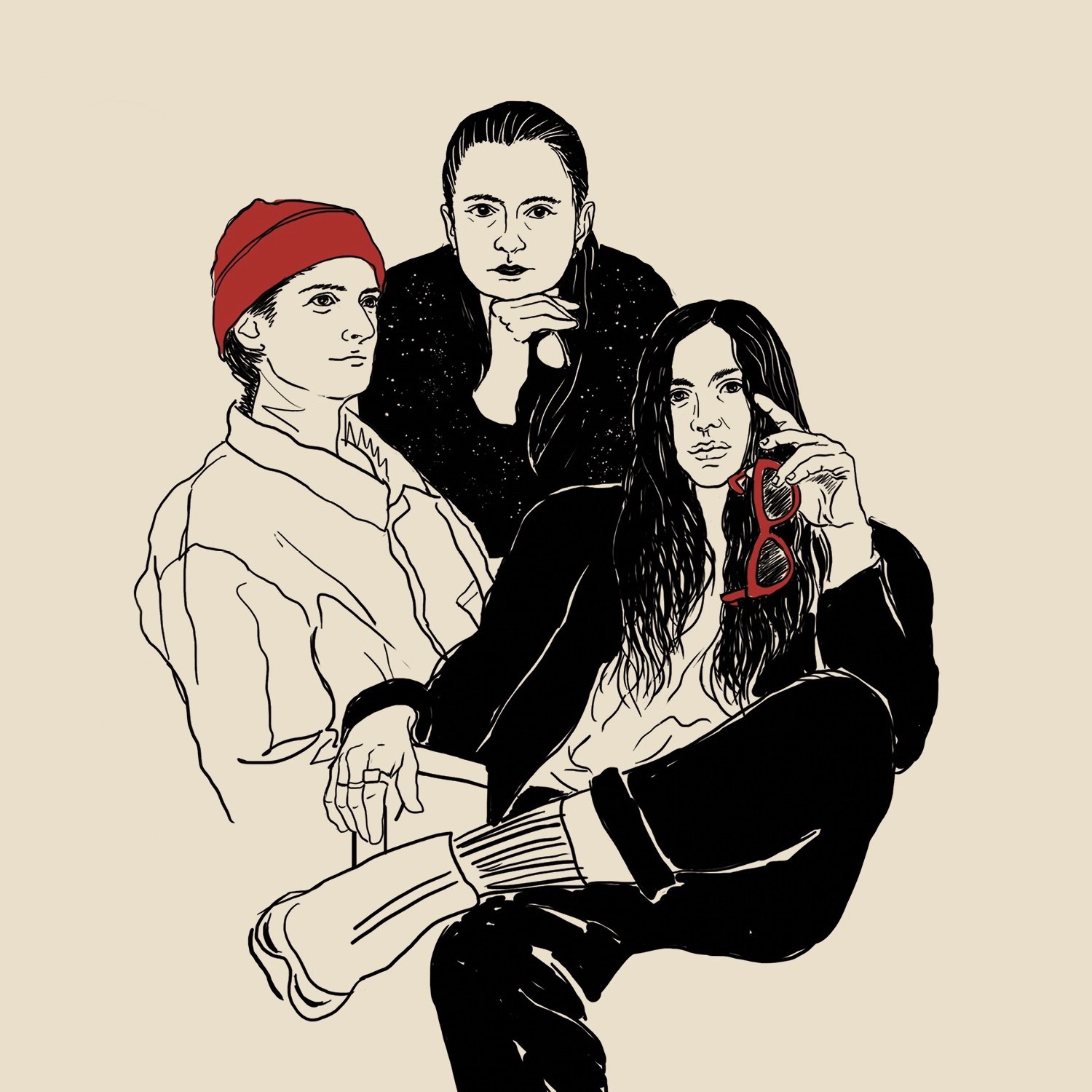Words by Maxine Flasher-Duzgunes.
The process of creating this story has been a literal enactment of the word choreography, as khoreia refers to the chorus, the ensemble dancing together, and graphia refers both to the writing as the invariable structure that coordinates the collective movement and the mark-making or trace left behind. ~ Eleanor Bauer
LONDON — Performance collective Nora (Stephanie McMann, Eleanor Sikorski, and Flora Wellesley Wesley) organises their dances through threads, co-opting projects that aren’t limited to the human body. For Nora, language is often the key to expanding the practice of choreography and has become the transferable thread through which dances can in fact be written.
Their film Nora the Many, based on a novel written by themselves along with choreographer Eleanor Bauer, will premiere this coming 29-30 September 2022 at the Lilian Baylis Studio at Sadler’s Wells, London. The fiction-based documentary was created in conjunction with Bauer’s PhD research on a new genre called Sensual Journalism at the Stockholm University of the Arts. Her collaborative writings with Nora follow the process of storytelling through choreographic methods and what it takes to document dance as a narrative.
“[Eleanor Bauer was] thinking of writing as a translation of dancing, and vice versa, or a response to dancing, and vice versa, like all the different ways that these two things might co-exist and the kind of impossibility of them being able to ever fully represent each other,” says Sikorski, in reference to Bauer’s splitting of the word choreo-graphy. Writing was within the etymology of the word itself, suggesting that the process of creation could be an interdisciplinary one.
Early on in their process with Bauer, the collective decided to write a screenplay for a film. In the porous back-and-forth creation process of pooling their writing, it ended up being a novel. The world and characters that they’d dreamed up together are the basis of the film they went on to make. Compared with the filming which took place only over seven days, the collective worked on the writing for 18 months, with sessions frequently conducted over Zoom. These sessions included face-to-face practices with a dance-writing group whom Bauer was working with in Sweden, and a writing course with Karinne Keithley Syers and the Pelagic School of Writing. The lockdowns created the opportunity to have meetings with others, generating bits of prose from word games: “retelling stories that already exist but through the trail of improvisational dance strategies,” says McMann. Sikorski describes these exercises as “re-mything” and “exquisite corpse”, a method of oral collective storytelling and written transcription developed by dancer and performer Eva Mohn, where a group of people take turns contributing just a few words at a time to a story without being able to control where the that story goes when the ‘talking stick’, so’s to speak, is passed on.
The writing method almost mirrors Nora the collective’s do-it-themselves approach during their production of the film. McMann details how they set up character portraits for each of the regulars in Cindy’s Bar and then devised improvisational scenes which one of them would usually direct. “We would imagine the scenarios of these people in this world because the set itself was in our novel,” says McMann. “I guess it’s a backwards way to look at filmmaking, you would usually have your storyboards and know exactly what shots and why, but we knew we just did not have the time.” Wesley describes how with the editing help of Bauer, they latched onto the characters like “talking heads,” essentially holding down the thread of the film. “[It’s] a documentary based on fiction,” she says, with the challenges of depicting fantastical characters like a giant, an electric child, an artist who is ‘”literally and figuratively a star”, and a daydreaming bartender with an infinite imagination. It required a kind of riffing associated with how movers improvise after mulling in the discomfort of being left onstage with little preparation. “Impossibly we’d try to follow our instincts,” says McMann, pressured to become the role right there before the camera.
The collective takes pride in the fact they have reversed the normal: instead of waiting for a choreographer’s invitation, they go ahead and invite a choreographer into their work. In the past, they have found that it pleases a choreographer to be approached without the burden of fundraising, and that the collaboration can mutually benefit them in the form of a combined research practice. The biggest differences are circumstantial in their processes with choreographers. When they invited Deborah Hay to make a live work in 2018, there was a neat, packaged product from their five-week studio process together that differed greatly from working with Bauer. They rode with Bauer and established new patterns of working based on the new online reality and the tangential and dancerly nature of their writing that was bound to begin someplace but end somewhere else.
For Nora, writing is how dancers can be empowered to articulate what they do. The collective prioritises dance-writing because of how it pulls out an individual’s capacity to voice their own experience, as it is common in traditional performance that a dancer may disappear into the group. The collective produced a series of films on the subject called Nora Reels between 2018 and 2021, amplifying the voices of dancers on living and working in their field. In doing so, Nora re-thinks dancing as not just a physical language, but a written one, where writing and its resulting conversations also serve to re-enact the space-time of choreography.
For more information and to book tickets visit here. Follow Nora on IG here! Header image design: Lan Le Huong.
